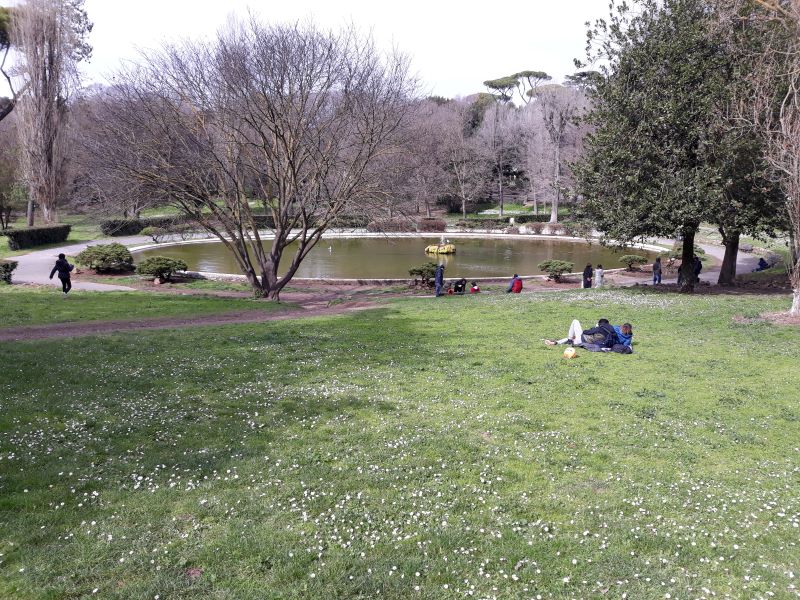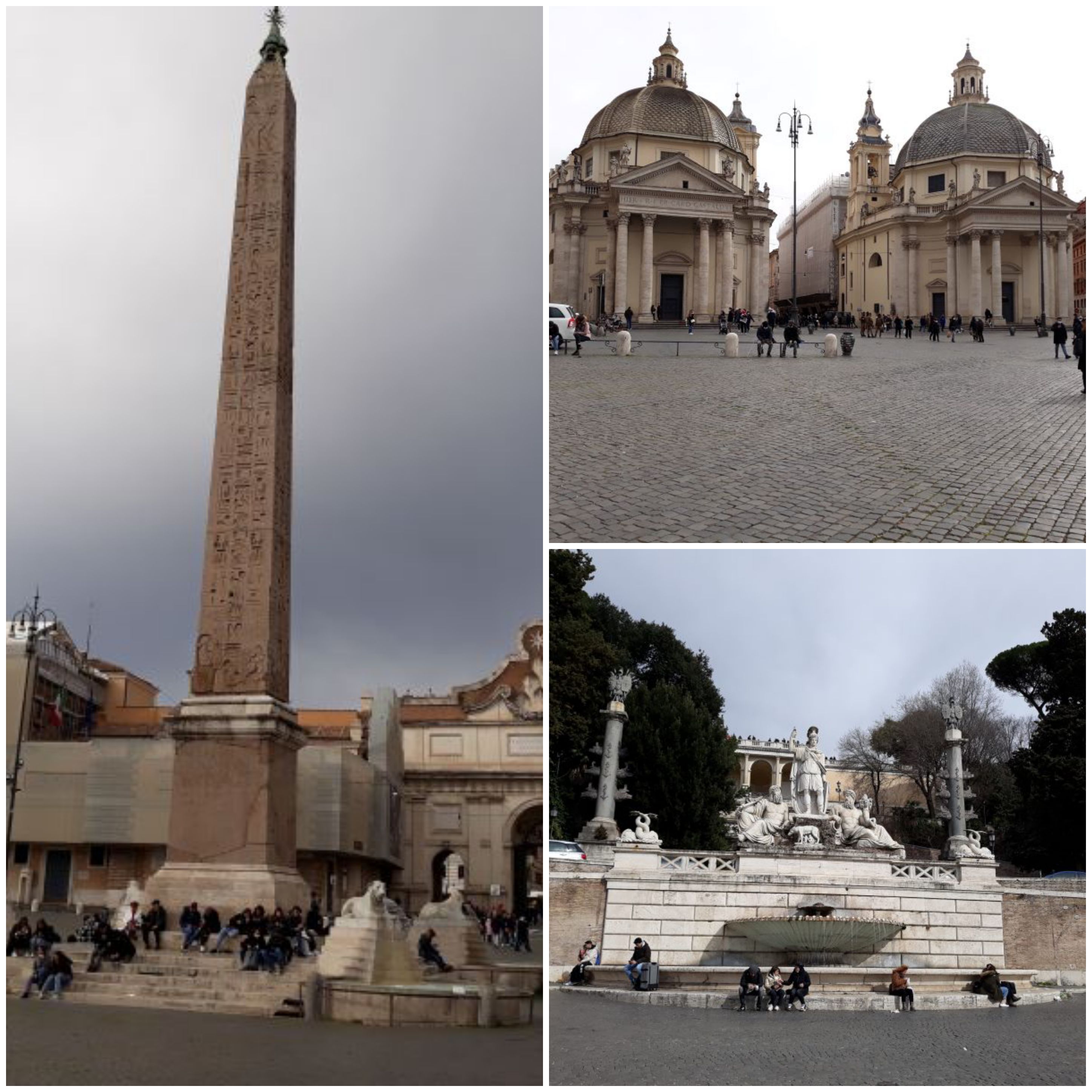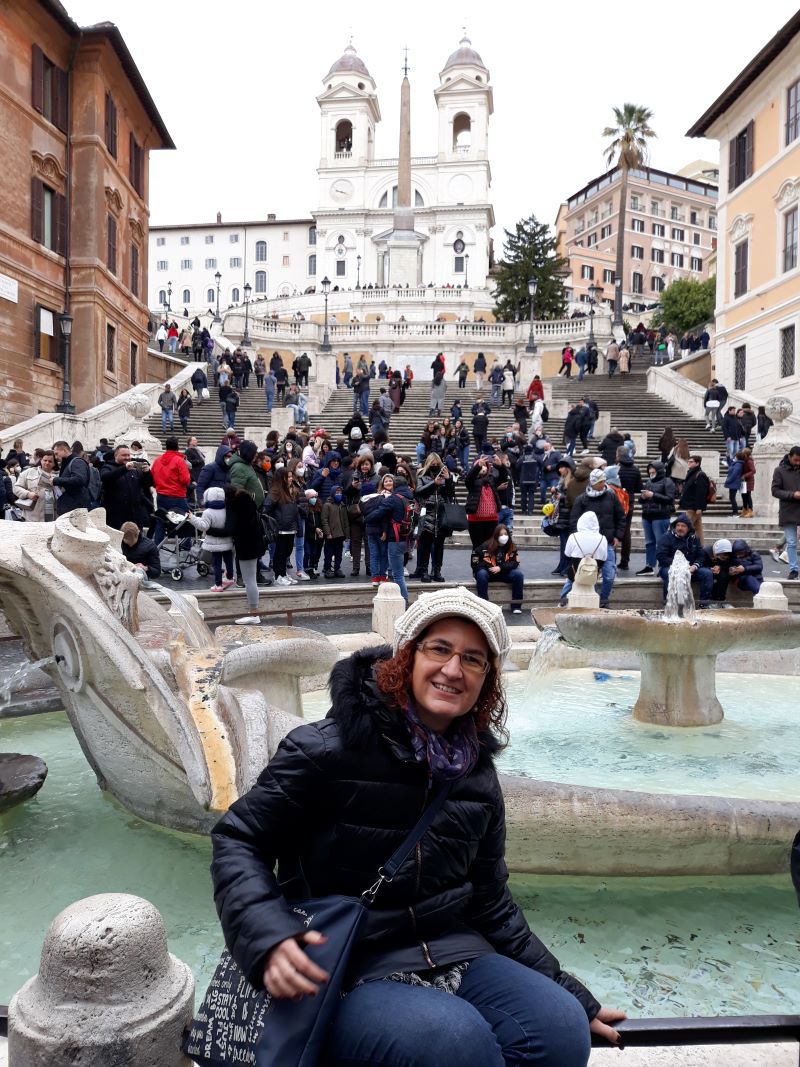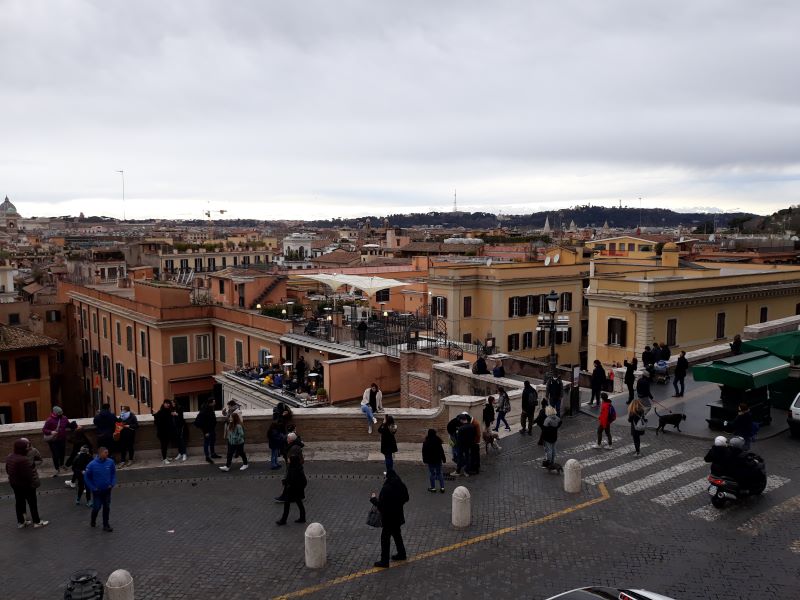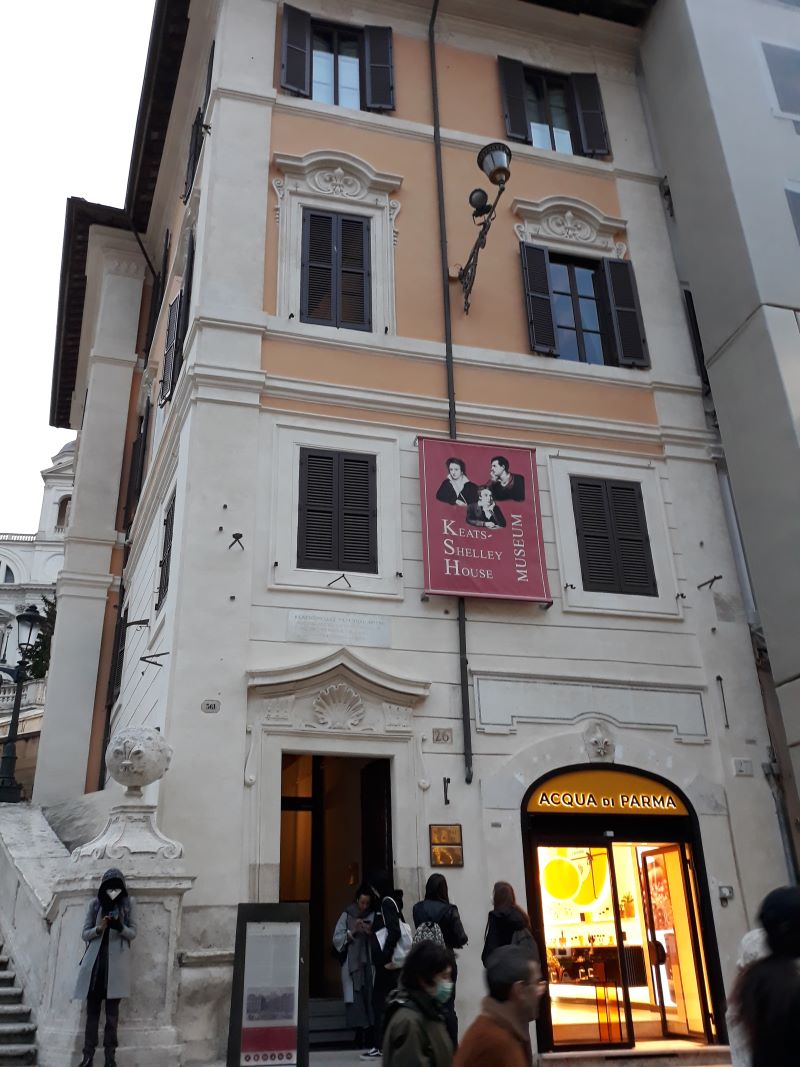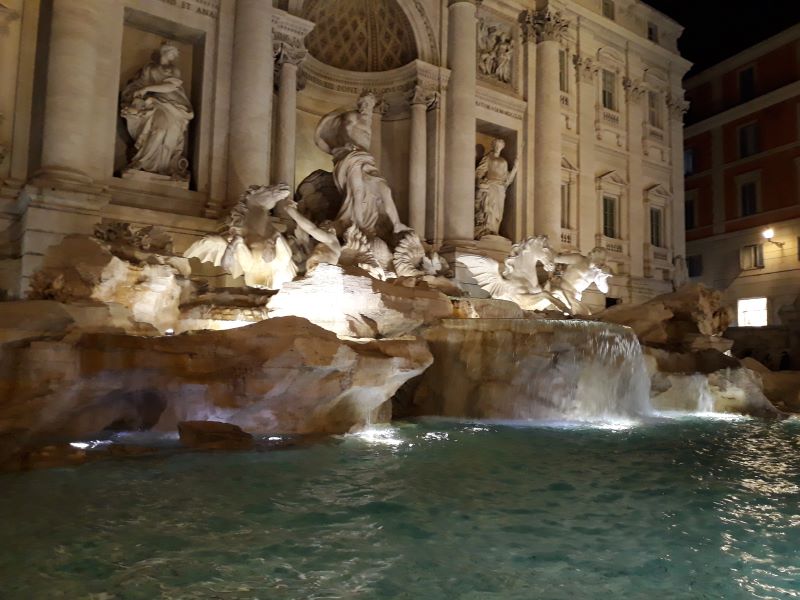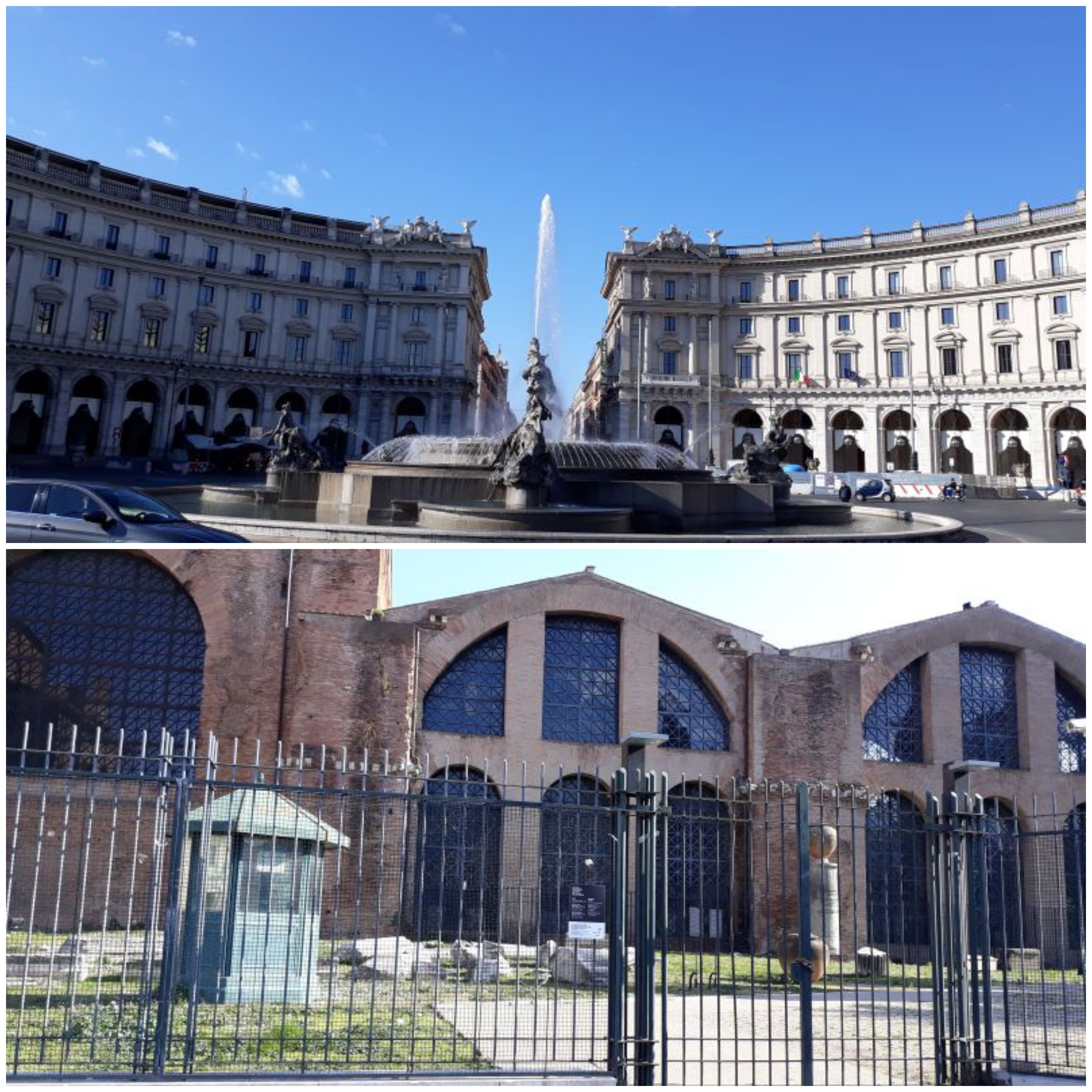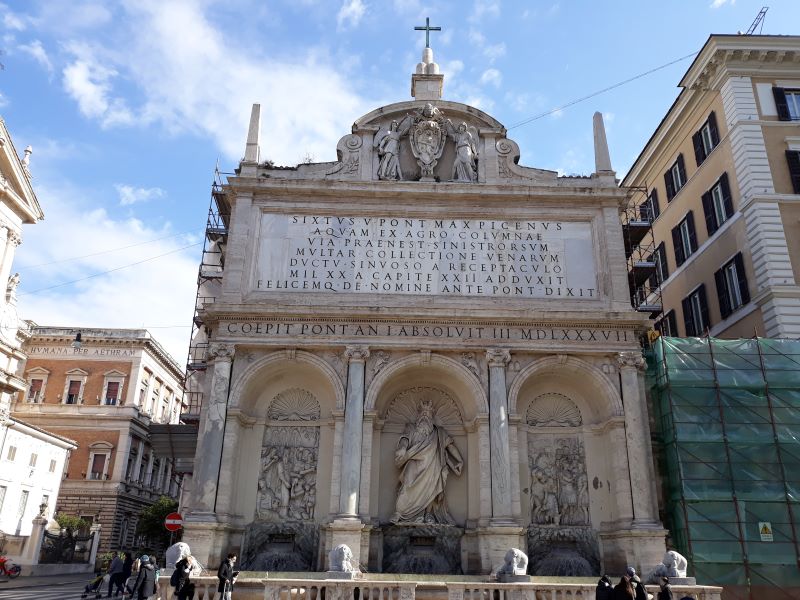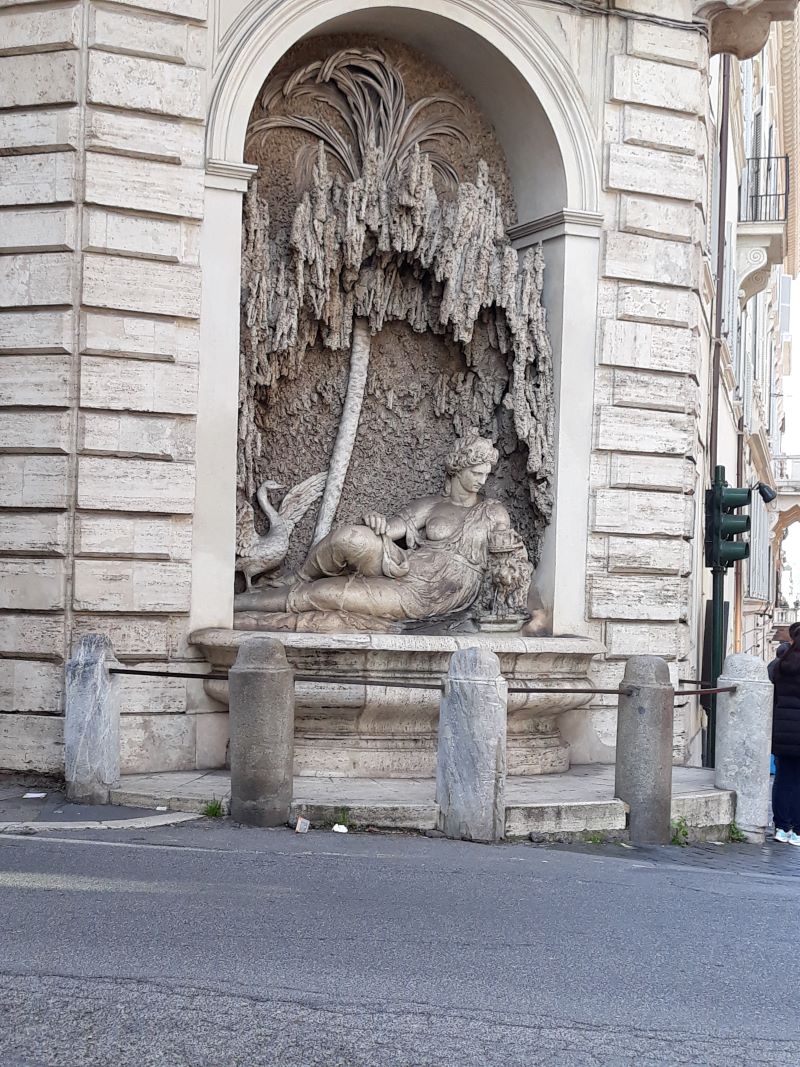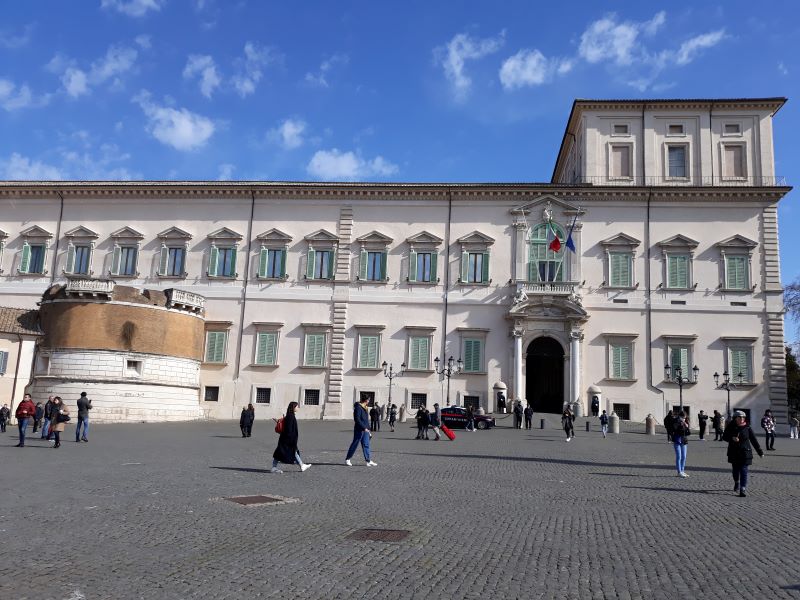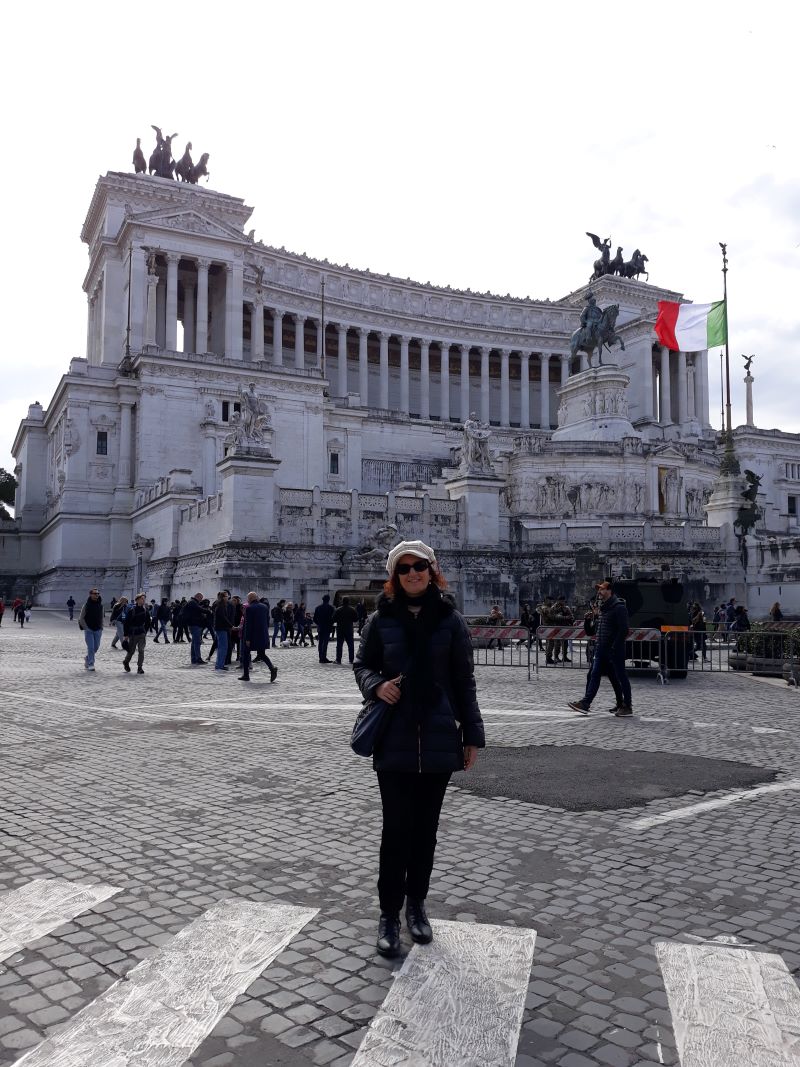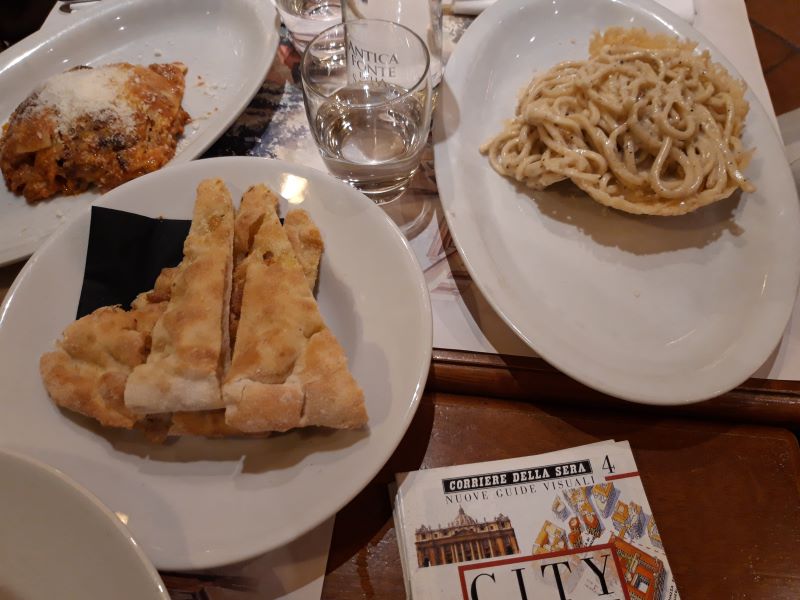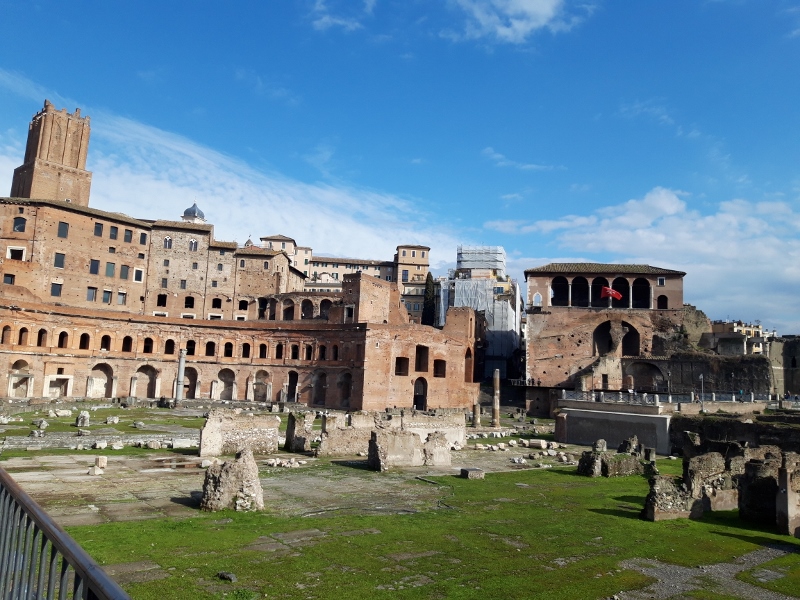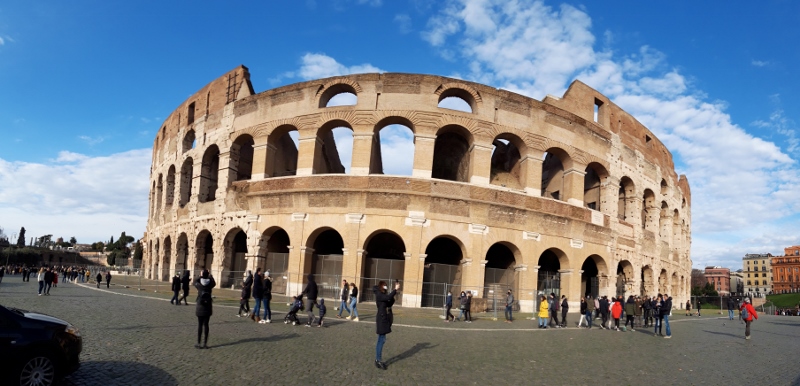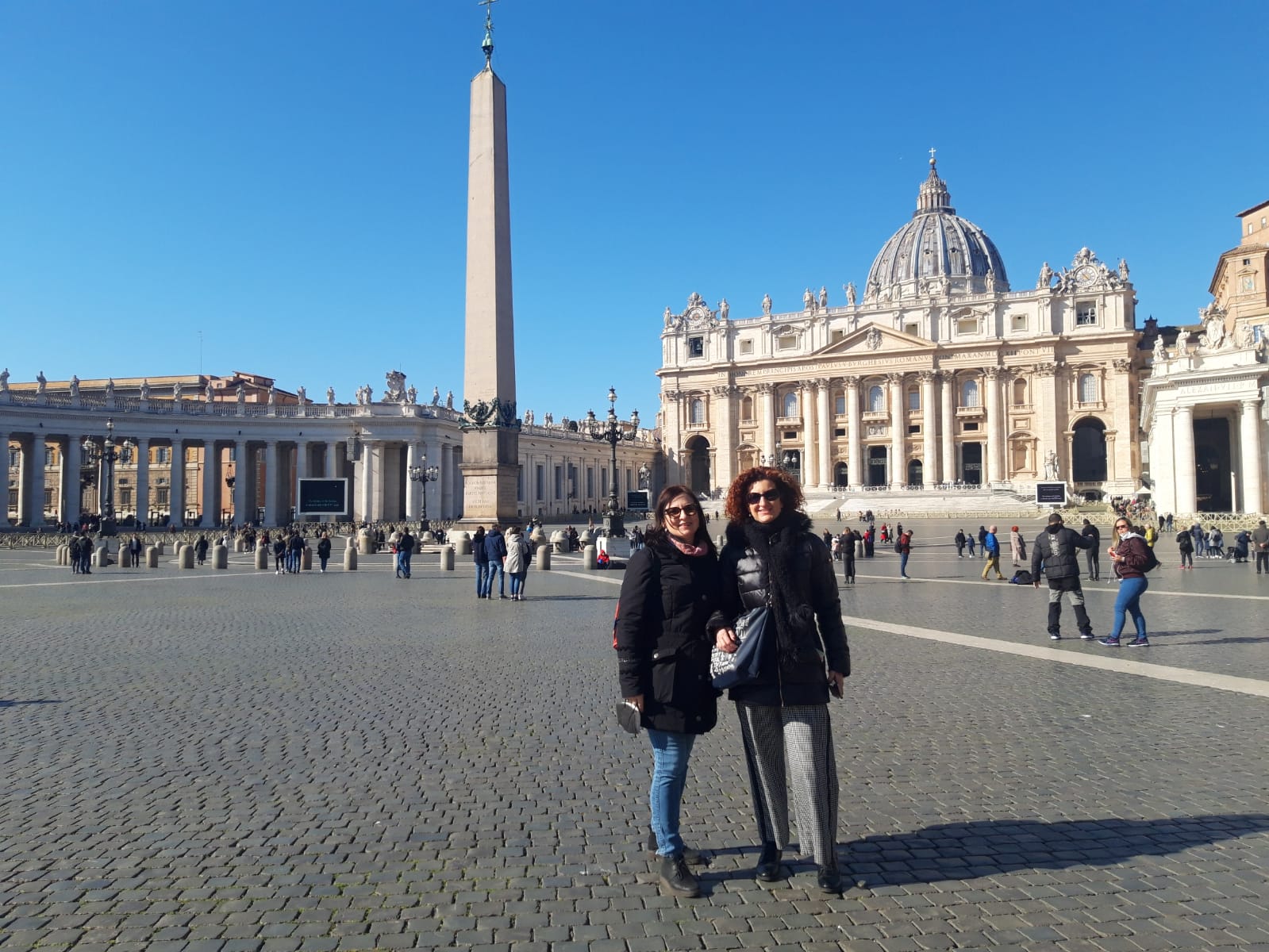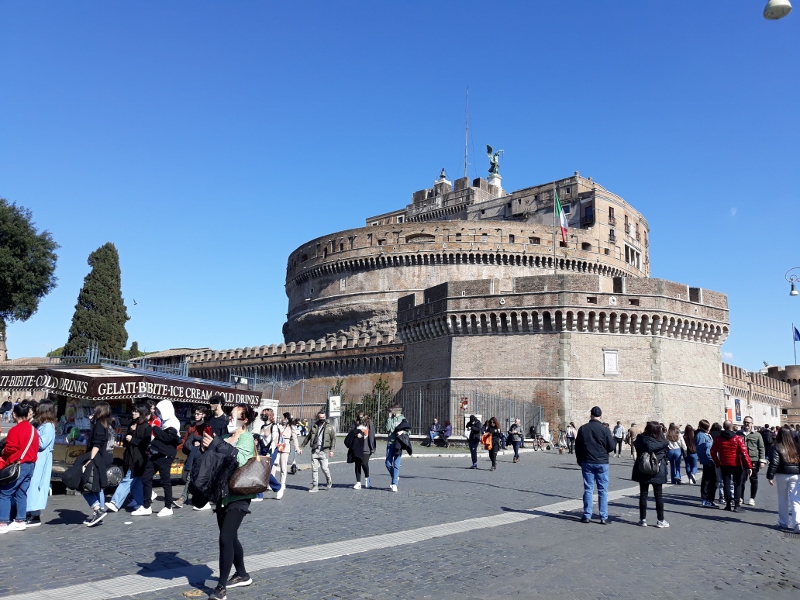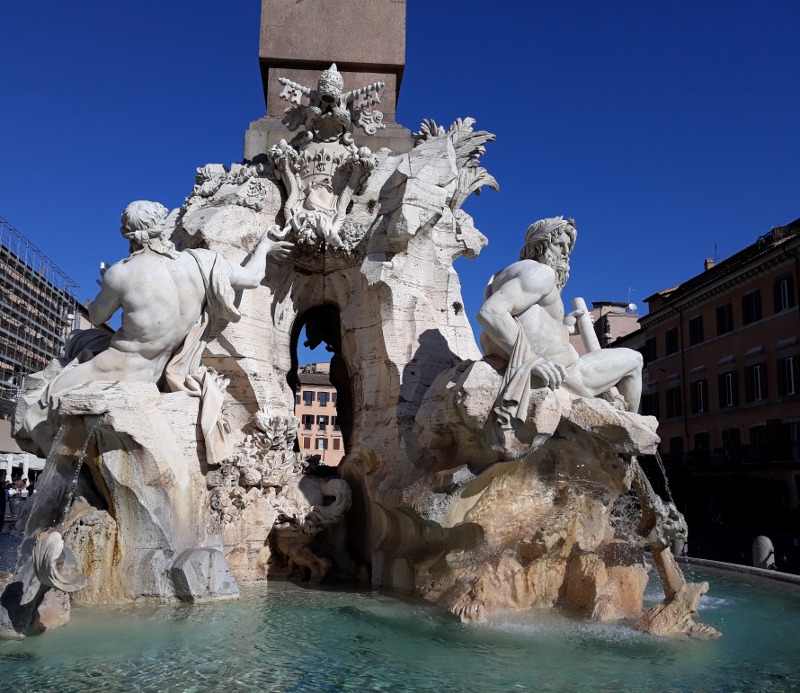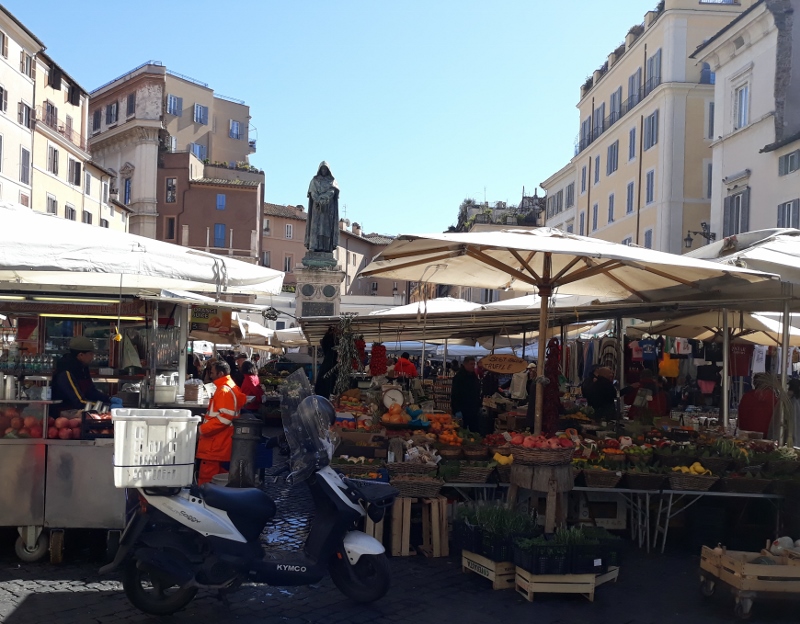26 febbraio – 2 marzo 2022
Sono tornata a Roma dopo la bellezza di 20 anni! Ricordo la magia di questa città che mi aveva conquistato quando la vidi la prima volta. Una metropoli caotica e moderna, dove in ogni angolo le opere monumentali dell’antica civiltà romana, testimonianze storiche di un passato glorioso, ti catapultano in un attimo indietro di secoli. E poi la veracità della sua gente, i suoi piatti tipici, il sole che splendeva in novembre mentre al nord c’era la nebbia… Pur essendoci tornata ora per la quarta volta, ho potuto scoprire ancora qualcosa di nuovo, e posso ancora dire che per me Roma è sempre una delle città più belle del mondo!
Rome: most significant monuments and symbols
26 February – 2 March 2022
I was back in Rome after a good 20 years! I remember the magic of this city that captivated me when I first saw it: a chaotic, modern metropolis where the monumental works of the ancient Roman civilization, historical vestiges of a glorious past, appear in every corner, and in an instant, they throw you back centuries. Moreover, the truthfulness of its people, its typical dishes, the sun shining in November while it was foggy in the north… Even though I went back there for the fourth time, I had the chance to discover something new, and I can still say that for me Rome is one of the most beautiful cities in the world!
26 feb: abbiamo preso il treno Freccia alle 8 ed alle 12 eravamo a Roma. Abbiamo alloggiato al Dab B&B, molto confortevole, non lontano dalla stazione Termini e da via Veneto, e circa 20 minuti a piedi dal centro.
Feb 26th: we took the Freccia train at 8 and by 12 we were in Rome. We stayed at Dab B&B, very comfortable, not far from Termini station and via Veneto, about 20 minutes’ walk from the city centre.
La nostra vacanza romana è iniziata con una passeggiata nel parco di Villa Borghese, accedendo dalla via Pinciana. Nonostante le margherite nei prati, l’aria era insolitamente frizzantina e la primavera sembrava ancora lontana. In questo parco tra i più vasti della città, si trovano il museo di Galleria Borghese, numerose sculture, fontane e monumenti celebrativi.
Our Roman holiday began with a walk in the park of Villa Borghese, reachable from via Pinciana. Despite the daisies in the meadows, the air was unusually crisp and spring still seemed far away. In this park, one of the largest in the city, you can find the Galleria Borghese museum, lots of sculptures, fountains and commemorative monuments.
Attraversando i giardini del Pincio, da cui si gode una bellissima vista sulla città, siamo scese in Piazza del Popolo. Questa piazza che oggi si presenta in forma ovale, è uno dei punti di accesso più importanti della città. Il suo simbolo è l’obelisco, risalente a più di 3000 anni fa e portato a Roma dall’Imperatore Augusto dopo la conquista dell’Egitto. Essa è così vivace, e perfino i gabbiani passeggiavano tra le persone! Eppure è stata teatro in passato di esecuzioni capitali molto crudeli.
Walking through the Pincio gardens, from which you can enjoy a beautiful view of the city, we went down to Piazza del Popolo. This presently oval shaped square, is one of the most important access points to the city. Its symbol is the obelisk, dating back more than 3000 years and brought to Rome by Emperor Augustus after the conquest of Egypt. It is so lively, even seagulls were strolling among the people! Yet very cruel executions took place here in the past.
Passando accanto alle eleganti chiese gemelle di Santa Maria dei Miracoli e Santa Maria di Montesanto, siamo giunte nel Corso, una delle vie del passeggio per eccellenza. Lungo il Corso si può vedere la casa dove visse il romanziere tedesco Goethe, che abitò a Roma per un breve periodo lavorando al suo famoso libro Viaggio in Italia. In una via laterale si trova lo studio dello scultore Canova, che a Roma creò alcune delle sue opere più conosciute: “Amore e psiche” e “Le tre grazie”.
Passing by the elegant twin churches of Santa Maria dei Miracoli and Santa Maria di Montesanto, we arrived in the Corso, one of the greatest promenades. Along the Corso you can see the house where the German novelist Goethe lived for a short time working on his famous book Journey to Italy. In a side street there is sculptor Canova’s studio; he made some of his best-known works in Rome: “Cupid and Psyche” and “The Three Graces”.
Eccoci nella piazza più famosa di Roma: piazza di Spagna, così detta perchè nel XVII secolo vi sorgeva l’ambasciata spagnola, è da sempre meta prediletta dai turisti. Bisogna attendere pazientemente il proprio turno per mettersi in posa dalla fontana barocca della Barcaccia, opera del Bernini, ed immortalarsi davanti alla celebre scalinata Trinità dei Monti; in questo periodo dell’anno non è addobbata con i fiori, ma rimane sempre un punto nevralgico, con le persone che affollano le gradinate a tratti dritte e a tratti curve. Sullo sfondo svettano i campanili gemelli che caratterizzano la facciata della chiesa di Trinità dei Monti.
Here we are in the most famous square in Rome: Piazza di Spagna, so called because the Spanish embassy was there in the 17th century, has always been a favourite destination for tourists. You have to wait patiently for your turn to pose by the baroque Barcaccia fountain, by Bernini, and immortalize yourself in front of the famous Trinità dei Monti stairway; in this time of the year it is not decorated with flowers, however it is a focal point, with people crowding its stands, sometimes straight and sometimes curved. In the background are the towering twin bell towers of the Trinità dei Monti church facade.
Salendo alla chiesa si gode di una vista particolarmente suggestiva al tramonto, quando la luce fa risaltare il colore ocra ed arancione degli edifici; si vede anche via Condotti, proprio di fronte, con le sue boutiques esclusive. Nel XVIII secolo questa zona era frequentata da numerosi artisti e scrittori e, proprio in via Condotti, i poeti romantici inglesi Keats e Byron frequentavano il Caffè Greco.
Going up to the church you can enjoy a really stunning view at sunset, when the light brings out the ocher and orange colour of the buildings; you can also see via Condotti, just opposite, with its exclusive boutiques. In the 18th century numerous artists and writers used to come here and the English romantic poets Keats and Byron used to go to Caffè Greco, right in via Condotti.
Avendo io e la mia compagna di viaggio studiato letteratura inglese all’università, era d’obbligo una visita alla fondazione Keats – Shelley su un lato di piazza di Spagna. L’edificio fu dimora nel 1820 di Keats; oggi è un museo che celebra anche il romantico inglese Shelley, che compose il poema Adonais, ispirato alla morte di Keats.
My travel mate and I studied English Literature at university, therefore a visit to the Keats-Shelley foundation on one side of Piazza di Spagna was a must. The building was Keats’ home in 1820; today it is a museum that also celebrates the English romantic Shelley, who composed the poem Adonais, inspired by the death of Keats.
Il nostro itinerario di oggi si è concluso con la Fontana di Trevi: prima ancora di scorgerla si sente lo scrosciare dell’acqua e si nota un grande andirivieni di folla. Qui, nel celebre film La dolce Vita di Fellini la bellissima Anita Ekberg fece il bagno! C’era chi, di spalle, gettava monetine, cosicchè, come da tradizione, tornerà sicuramente a Roma; chi scattava foto; chi, come noi, era seduto ad ammirare con emozione una delle attrazioni più amate di Roma: questa immensa scenografia con Nettuno al centro e due tritoni che guidano dei cavalli marini. In origine qui arrivava l’acquedotto dell’Acqua Vergine, costruito nel 19 a.C per alimentare le terme. La Vergine raffigurata in un rilievo in alto indica appunto la sorgente.
Our itinerary today ended with Trevi Fountain: even before you see it, you can hear the roar of the water and notice the coming and going of the crowd. Here, in the famous La Dolce Vita film by Fellini, beautiful Anita Ekberg took a bath! There were those who, from behind, threw coins, so that, as per tradition, they will certainly go to Rome again; those who took pictures; those who, like us, were sitting admiring excited one of the most popular attractions of Rome: this huge scenography with Neptune in the centre and two tritons riding sea horses. Originally, the Acqua Vergine aqueduct arrived here, built in 19 BC to supply the thermal baths. The Virgin depicted in a relief above shows the source.
27 feb: oggi ho scoperto alcune parti di Roma che non avevo avuto modo di vedere nelle mie precedenti visite. Piazza della Repubblica, dalla forma semicircolare, fu realizzata durante il rinnovamento di Roma dopo l’unità d’Italia. Il bianco e lo stile ottocentesco dei suoi portici creano un contrasto d’effetto con la pietra rossiccia delle terme di Diocleziano: le rovine danno l’idea della grandezza di questo complesso, risalente al 300 d C, che un tempo sorgeva qui. Oggi si possono vedere le parti meglio conservate, che ospitano la chiesa di Santa Maria degli Angeli ed il museo nazionale romano.
Feb 27th: today I discovered some parts of Rome that I hadn’t been able to see in my previous visits. Semicircular Piazza della Repubblica was built during the renewal of Rome after the unification of Italy. The 19th-century white arcades create an effective contrast with the reddish stone of the Diocletian Baths: the remains suggest the grandeur of this complex, dating back to 300 AD, which once was here. Today you can see the best preserved parts, which house the church of Santa Maria degli Angeli and the Roman national museum.
Se la Fontana di Trevi è indubbiamente la più famosa a Roma, ve ne sono altre che meritano di essere viste: poco lontano da Piazza della Repubblica, in Piazza San Bernardo, sorge l’imponente fontana del Mosè, con tre arcate e la statua di Mosè nella nicchia centrale ed i quattro leoni decorativi.
If the Trevi Fountain is undoubtedly the most famous in Rome, there are others that are worth seeing: not far from Piazza della Repubblica, in Piazza San Bernardo, stands the imposing Moses fountain, with three arches and the statue of Moses in the central niche and the four decorative lions.
Proseguendo per via XX Settembre, le Quattro Fontane decorano gli angoli degli edifici all’incrocio di via delle Quattro Fontane e via del Quirinale: in ogni fontana vi è una statua di una divinità sdraiata. Non è facile fotografarle poiché l’incrocio è trafficato! Questa è la Fontana della Forza o di Giunone.
Going straight down via XX Settembre, the Four Fountains decorate the corners of the buildings at the intersection of via delle Quattro Fontane and via del Quirinale: in each fountain there is a statue of a divinity lying down. It is not easy to photograph them since the intersection is busy! This is the Fountain of Strength or of Juno.
Roma è sede delle istituzioni dello Stato italiano. Uno degli edifici simbolo in piazza del Quirinale, sull’omonimo colle, è il Palazzo del Quirinale, che un tempo era la residenza dei re d’Italia, ed oggi ospita il Presidente della Repubblica. Si può anche visitare prenotando con 5 giorni d’anticipo. Da un lato della piazza si gode una bella vista sulla città, dall’altro si ammira la fontana con l’obelisco e le statue di Castore e Polluce: l’obelisco si vede già avvicinandosi alla piazza da via del Quirinale, un bel colpo d’occhio.
Rome is the seat of the institutions of the Italian state. One of the symbolic buildings in Piazza del Quirinale, on the homonym hill, Palazzo del Quirinale, which was once the residence of the kings of Italy, and today houses the President of the Republic. It can also be visited by booking 5 days in advance. On one side of the square you can enjoy a beautiful view of the city, on the other you can admire the fountain with the obelisk and the statues of Castor and Pollux: the obelisk can already be seen as you approach the square from via del Quirinale, a nice glance.
Siamo scese lungo via XXIV Maggio in Piazza Venezia, dove sorge il Monumento Nazionale dedicato al re Vittorio Emanuele II di Savoia, detto anche Vittoriano o Altare della Patria. Esso celebra l’Italia intera unificata, liberata dalla dominazione straniera. Ricordo come ero rimasta colpita durante la mia prima visita, quando vidi questo imponente blocco di marmo bianco illuminato dalle luci della sera! Anche di giorno, comunque, mantiene il suo fascino. Si può salire sulla terrazza con un ascensore, ma una lunga fila di persone ci ha fatto desistere!
We went down via XXIV Maggio to Piazza Venezia, where the National Monument dedicated to King Vittorio Emanuele II of Savoy stands, also called Vittoriano or Altare della Patria. It celebrates the whole unified Italy, freed from foreign domination. I remember how impressed I was on my first visit when I saw this imposing block of white marble illuminated by the evening lights! During the day, however, it is still charming. You can take an elevator up to the terrace, but a long line of people made us give up!
Roma è tanto bella, ma richiede anche molto tempo ed energia per visitarla, quindi per ricaricarci abbiamo mangiato un buon piatto romano di bigoli cacio e pepe in una tipica osteria dietro a Piazza Venezia.
Rome is so beautiful, but it also requires a lot of time and energy to visit, so to regain strength we ate a good Roman dish of “bigoli cacio e pepe” in a typical osteria behind Piazza Venezia.
Ci aspettava un pomeriggio intenso con la visita dei Fori Imperiali, sia per la vastità di questa area archeologica da attraversare a piedi, sia perché è un vero e proprio viaggio mentale nella vita dell’antica Roma. Il Foro era la piazza e costituiva il centro delle attività giudiziarie, politiche e commerciali della città. Ci vorrebbe un’intera giornata per soffermarsi da ognuno dei resti di quelle che un tempo erano piazze frequentate da personaggi importanti, basiliche dove si esercitavano le pratiche giudiziarie, templi dedicati al culto religioso e le botteghe dei mercati traianei, dove si esercitava il commercio.
An intensive afternoon awaited us visiting the Imperial Forums, both for the vastness of this archaeological area to be crossed on foot and because it is a real mental journey into the life of ancient Rome. The Forum was the square and constituted the centre of the judicial, political and commercial activities of the city. It would take a whole day to stop by each of the remains of what were once squares frequented by important people, basilicas where judicial practices were exercised, temples dedicated to religious worship and the shops of the Trajan markets, where trade was carried on.
In fondo a Via dei Fori Imperiali si scorgono gli archi di colonne doriche, ioniche e corinzie del Colosseo, altra icona di Roma. In questo vasto anfiteatro fatto costruire dall’Imperatore Vespasiano, un tempo avevano luogo i combattimenti dei gladiatori e degli animali. Ricordo che durante il mio primo soggiorno avevo potuto visitarlo, ed all’ingresso eravamo stati accolti da un simpatico gladiatore “contemporaneo”. Questa volta, purtroppo, gli orari di visita invernali terminavano già nel primo pomeriggio.
At the end of Via dei Fori Imperiali you can see the arches of Doric, Ionic and Corinthian columns of the Colosseum, another icon of Rome. In this huge amphitheatre built by Emperor Vespasian, gladiatorial and animal fights once took place. I remember that during my first stay I was able to visit it, and at the entrance we were greeted by a friendly “contemporary” gladiator. This time, unfortunately, the winter visiting hours ended already in the early afternoon.
Abbiamo sostato brevemente dal Pantheon, il tempio romano dedicato a tutti gli dei; l’edificio progettato dall’imperatore Adriano, è divenuto uno dei simboli di Roma, con l’imponente pronao rettangolare racchiuso da colonne in granito, che nasconde la grande cupola emisferica. Qui si trovano le tombe dei re d’Italia Vittorio Emanuele II ed Umberto I, e la tomba del celebre pittore Raffaello Sanzio.
We stopped briefly at the Pantheon, the Roman temple dedicated to all gods; the building designed by Emperor Hadrian has become one of the symbols of Rome, with the imposing rectangular pronaos enclosed by granite columns, which hides the large hemispherical dome. Here are the tombs of the kings of Italy Vittorio Emanuele II and Umberto I, and the tomb of the famous painter Raffaello Sanzio
Anche questa giornata volgeva al termine. Abbiamo voluto cenare vicino ad uno dei luoghi della movida notturna romana, Piazza Navona – di cui vi parlerò in seguito. In questa zona ci sono moltissimi ristoranti e pizzerie, ma conviene prenotare; non siamo rimaste molto soddisfatte della cena, meglio i ristorantini più defilati dal centro e vicini al nostro B&B, dove abbiamo assaggiato degli ottimi carciofi alla giudia, carciofi fritti tipici della cucina laziale.
This day too was going to end. We wanted to dine near one of the places of Roman nightlife, Piazza Navona – I will tell you about it later, In this area there are many restaurants and pizzerias, but it is advisable to book; we were not very satisfied with the dinner, better the little restaurants further away from the centre and close to our B&B, where we tasted some excellent ” carciofi alla giudia”, fried artichokes typical of Lazio cuisine.
28 feb: oggi abbiamo fatto una full immersion nell’arte! In metropolitana ci siamo recate alla Basilica di San Pietro; non era la prima volta per me, ma quando si giunge nella piazza di forma ellittica e ci si trova dinnanzi alla maestosa cupola della basilica, progettata dal Michelangelo, si respira un’atmosfera di grande effetto. Questo luogo sacro, fulcro del cattolicesimo e meta di turisti e pellegrinaggi da tutto il mondo, era inizialmente un santuario eretto sulla tomba di San Pietro. Nel corso dei secoli fu poi edificata la grande chiesa che oggi vediamo, opera degli architetti del Rinascimento romano e del Barocco.
Vi era già una lunga fila di persone in attesa di entrare, così abbiamo avuto tutto il tempo di ammirare e fotografare l’imponente colonnato in travertino che circonda la piazza e l’obelisco egiziano posto al centro di essa. Sul lato destro della piazza vi è la finestra da cui, molti anni prima, avevo visto affacciarsi Papa Giovanni Paolo II per dare la benedizione ai fedeli radunati numerosi come ogni domenica a mezzogiorno.
Abbiamo trascorso un bel paio d’ore incantate davanti ai tesori preziosi custoditi all’interno della basilica, tra cui il grande baldacchino del Bernini in bronzo dorato – alla cui base vi è lo stemma di papa Urbano VIII con le chiavi del Regno dei Cieli -, ed il famoso blocco scultoreo in marmo della Pietà del Michelangelo, nella navata destra.
Feb 28th: today we had a full immersion in art! By underground we went to St. Peter’s Basilica; it wasn’t the first time for me, but when you arrive in the elliptical square and find yourself in front of the majestic dome of the basilica, designed by Michelangelo, it feels really great. This sacred place, the heart of Catholicism and a destination for tourists and pilgrimages from all over the world, was initially a sanctuary built on the tomb of St. Peter. Over the centuries the large church that we see today was built by architects of the Roman Renaissance and Baroque.
People were already in a long queue waiting to enter, so we had plenty of time to admire and photograph the imposing travertine colonnade that surrounds the square and the Egyptian obelisk in the centre of it. On the right side of the square there is the window from which, many years before, I had seen Papa Giovanni Paolo II look out to give his blessing to the many faithful gathered like every Sunday at noon.
We spent a couple of hours enchanted by the precious treasures kept inside the basilica, including Bernini’s large gilded bronze canopy – at the base of which is the coat of arms of Pope Urban VIII with the keys to the Kingdom of Heaven – , and the famous marble sculptural block of Michelangelo’s Pietà, in the right aisle.
Lungo via della Conciliazione siamo poi giunte a Castel S. Angelo. Questa massiccia fortezza, che prende il nome dalla statua dell’arcangelo Michele sulla sua cima, nel corso degli anni ha avuto varie funzioni: da mausoleo dell’imperatore Adriano, a prigione nel Medioevo, a residenza dei papi nel Rinascimento. Nel parco antistante abbiamo pranzato: avevamo bisogno di un po’ di aria fresca e di relax prima di tuffarci nuovamente nell’arte perché nel pomeriggio ci aspettavano i Musei Vaticani!
Along via della Conciliazione we then got to Castel S. Angelo. This massive fortress, which takes its name from the statue of Archangel Michael on its top, has had various functions over the years: from emperor Hadrian’s mausoleum, to a prison in the Middle Ages, to the popes’ residence in the Renaissance. We had lunch in the park opposite: we needed some fresh air and relaxation before plunging back into art because the Vatican Museums awaited us in the afternoon!
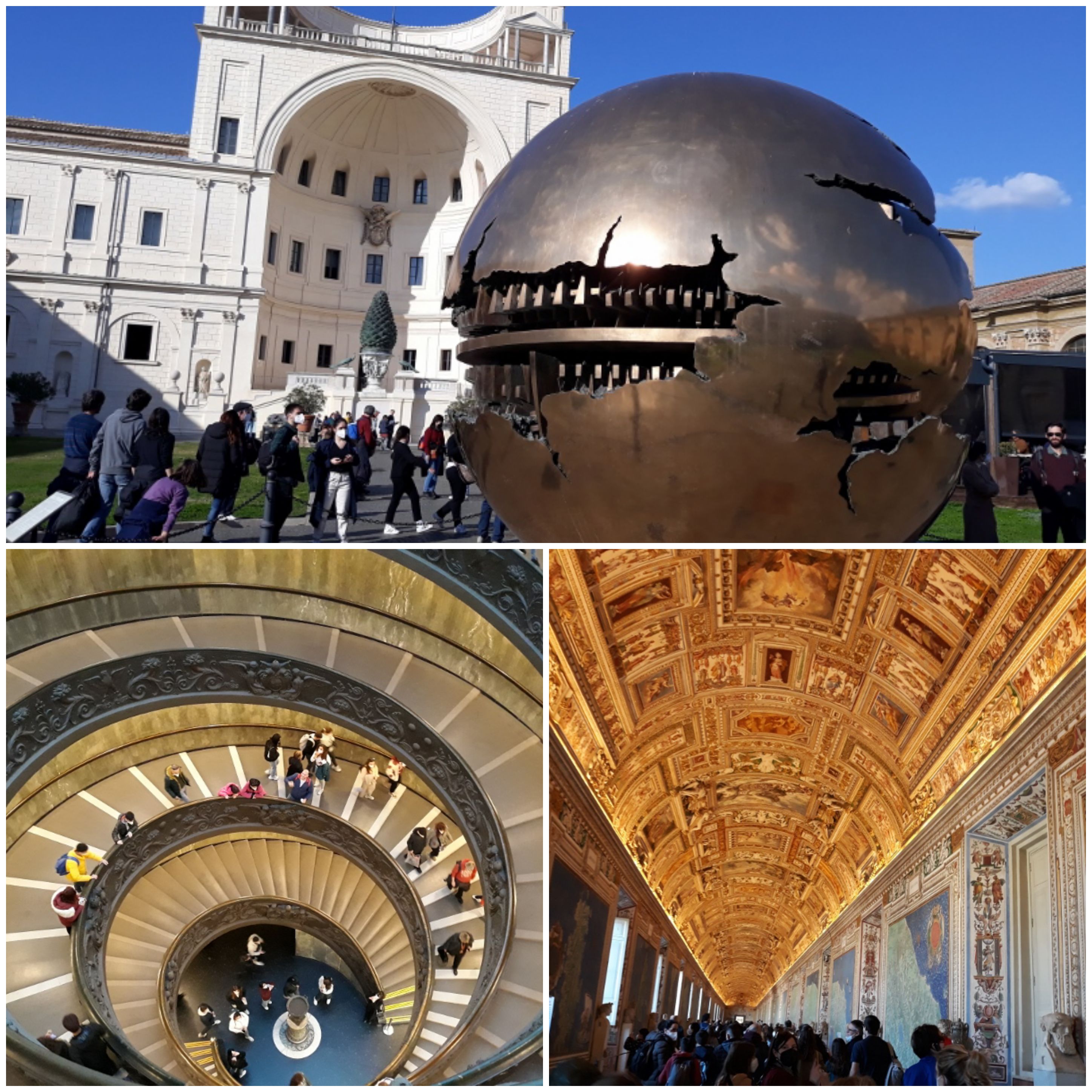
Musei Vaticani: cortile della Pigna, scala elicoidale, galleria delle carte geografiche – Vatican Museums, spiral staircase, gallery of geographical maps
Salendo la spettacolare scala elicoidale siamo giunti ai Musei, ospitati negli edifici che un tempo erano i palazzi dei papi. Ci vorrebbero giorni per vedere tutte le opere d’arte, da quella classica a quella rinascimentale, ma anche dell’antichità, che costituiscono una delle più importanti collezioni del mondo. Noi ci siamo soffermate a vedere il gruppo marmoreo del Laocoonte, abbiamo camminato lungo la galleria degli arazzi e la galleria delle carte geografiche, e poi la sala degli animali, le stanze di Raffaello ed infine la Cappella Sistina (dove purtroppo ci si può fermare per poco tempo e c’era davvero tanta gente). Merita una sosta il cortile della Pigna, così chiamato per la grande pigna in bronzo appartenuta ad un’antica fontana romana: di fronte vi sono dei bei giardini con un’opera moderna dello scultore Pomodoro.
Going up the spectacular spiral staircase we reached the Museums, housed in the buildings that were once the popes’ palaces. It would take days to see all the works of art, from classical to Renaissance, but also from antiquity, which make up one of the most important collections in the world. We stopped to see the Laocoon’s marble group, we walked along the gallery of tapestries and the gallery of geographical maps, and then the animal room, Raphael’s rooms and finally the Sistine Chapel (where unfortunately you can stop for a short time and there were really a lot of people). The Pigna courtyard is worth a stop, named after a large bronze pine cone that belonged to an ancient Roman fountain: in front of it there are beautiful gardens with a modern work by sculptor Pomodoro.
1 marzo: oggi abbiamo effettuato una gita fuori porta per visitare la Villa Adriana a Tivoli…cliccate qui per leggere l’articolo.
March 1st: today we took a trip out of town to visit Villa Adriana in Tivoli… clic here to read about it.
2 marzo: ultimo giorno del nostro soggiorno romano. In autobus siamo andate in Piazza Navona: era poco dopo le 9 ma c’era già parecchio movimento di turisti che si immortalavano davanti alle sue tre maestose fontane. Questa è la Fontana dei Fiumi posta al centro, disegnata da Bernini, che offre uno scorcio suggestivo sulla piazza. In questo che oggi è uno dei luoghi più “in” di Roma, nell’antichità sorgeva lo stadio di Domiziano dove si svolgevano le gare atletiche, gli agones; la forma della piazza riprende quella dell’antico stadio ed oggi è possibile visitare parte dei resti di esso con un tour che parte dal lato est della piazza.
March 2nd: last day of our stay in Rome. We went by bus to Piazza Navona: it was just after 9 but it was already busy with tourists who immortalized themselves in front of its three majestic fountains. This is the Fountain of the Rivers placed in the centre, designed by Bernini, which offers a suggestive glimpse of the square. In what is now one of the most “in” places in Rome, in ancient times there was Domitian’s stadium, where the athletic competitions, the agones, were held; the plan of the square follows the one of the ancient stadium and today it is possible to visit part of the remains of it with a tour that starts from the east side of the square.
Abbiamo trascorso gli ultimi scampoli di tempo in Campo de’ Fiori, uno dei quartieri più pittoreschi e veraci di Roma che mi era tanto piaciuto già nei miei precedenti soggiorni. Nelle viuzze che si diramano dalla piazza vi sono numerose botteghe di artigianato, e fornai dove acquistare una buona focaccia. Nella piazza centrale l’atmosfera è gioiosa per via della gente ed i colori dei banchetti di fiori e frutta. Al suo centro, tuttavia, la statua di Giordano Bruno, il filosofo messo al rogo per eresia nel 1600, è la triste testimonianza delle esecuzioni che avevano luogo un tempo.
We spent the time left in Campo de’ Fiori, one of the most picturesque and authentic neighborhoods of Rome, I liked it so much in my previous stays. In the lanes that branch off from the square there are lots of craft shops and bakers where you can buy a good focaccia. In the central square the atmosphere is joyful because of the people and the colours of the flower and fruit stalls. At its centre, however, the statue of Giordano Bruno, the philosopher burned at the stake for heresy in the 1600s, bears sad testimony to the executions that once took place.
Siamo tornate a casa soddisfatte per aver visto così tante cose in pochi giorni, tanto che nei mesi successivi io ero ancora sazia di cultura, ed anche di tutte le belle emozioni che questa città, ancora una volta, ha saputo regalarmi.
We returned home satisfied for having seen so many things in a few days, so that in the following months I was still sated with culture, as well as with all the beautiful emotions that this city, once again, was able to give me.
